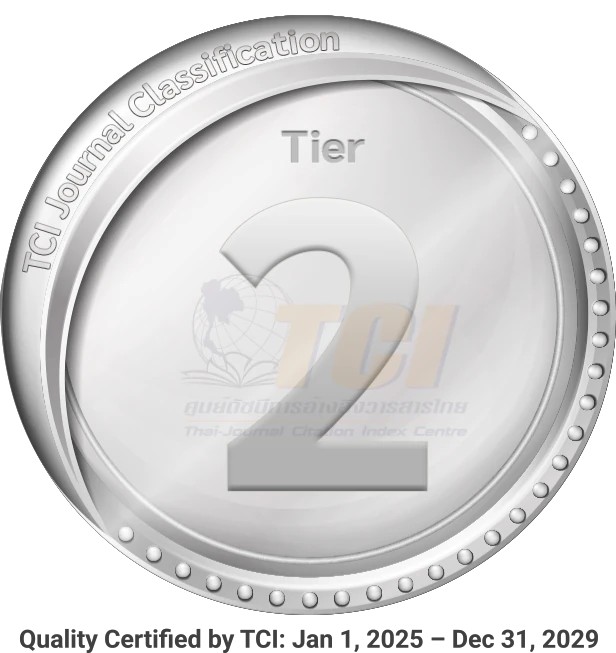The Integration of Sufficiency Economy Philosophy Concepts into Learning Management through a Concept Map for Grade 6 Students at Chareonvich School
Abstract
The purposes of the study were to (1) study the current situation of integrating sufficiency economy concepts into learning management for Grade 6 students at Chareonvich School in Krabi, Thailand, (2) use a concept map to integrate sufficiency economy concepts into the Science and Thai subjects, and (3) evaluate effectiveness of the integration. The subjects for Objective 1 were 12 school directors and 57 teachers from 12 schools responsible for eight subject strands in Grade 6. The subjects for Objectives 2 and 3 were 60 Grade 6 students at Chareonvich School. There were seven research instruments (1) a semi-structured interview for school directors, (2) a questionnaire for teachers, (3) Science and Thai lesson plans containing sufficiency philosophy concepts with the use of a concept map, (4) a pre-and post-test evaluation of students’ knowledge, (5) an observation form for student performance assessment, (6) an assessment form of student sufficiency attributes, and (7) a questionnaire on student satisfaction. Data collection was completed in 2012. The major findings were in three folds: (1) sufficiency economy as perceived by school directors and teachers, (2) the use of a concept map by students to understand sufficiency economy, and (3) evaluation of effectiveness of sufficiency economy integrated into students’ learning. As for the first fold, all school directors reported that they put sufficiency economy into visions, missions, and annual goals in their school planning, and they made sure that their staff members were able to realize sufficiency economy into student learning, agriculture activities, self-reliance and career building. The teachers’ responses pointed to their integrating sufficiency economy into all learning strands at a moderate level ( X = 3.16; SD = .60) and their learning management at a high level ( X = 4.23; SD = .47). The teachers evaluated sufficiency economy in eight subject strands at a high level ( X = 3.91; SD = .63). They encountered a few problems in the learning management of all subject strand ( X = 1.85, SD = .66), and in the evaluation of all learning strands ( X = 2.17, SD = .64). Their problems with student achievement in terms of understanding and application of sufficiency economy were at a moderate level ( X = 2.55; SD = .67). The use of a concept map by Grade 6 students of Chareonvich School showed that they were able to use it to holistically analyze seven elements: (1) objective, (2) knowledge, (3) morality, (4) economy, (5) usefulness, (6) Efficiency, and (7) Safety. These elements reflected the students’ plan for their learning activities at 83 percent. As for the evaluation of effectiveness of economy sufficiency integration, the students’ knowledge of the concept in pre- and post-test scores showed a significant gain at the 0.05 level. They obtained an averaged high performance score in the learning process (86.67%), in sufficiency economy attributes (80%). Their satisfaction with economy sufficiency integration was at a high level ( X = 4.23, SD = .80).



